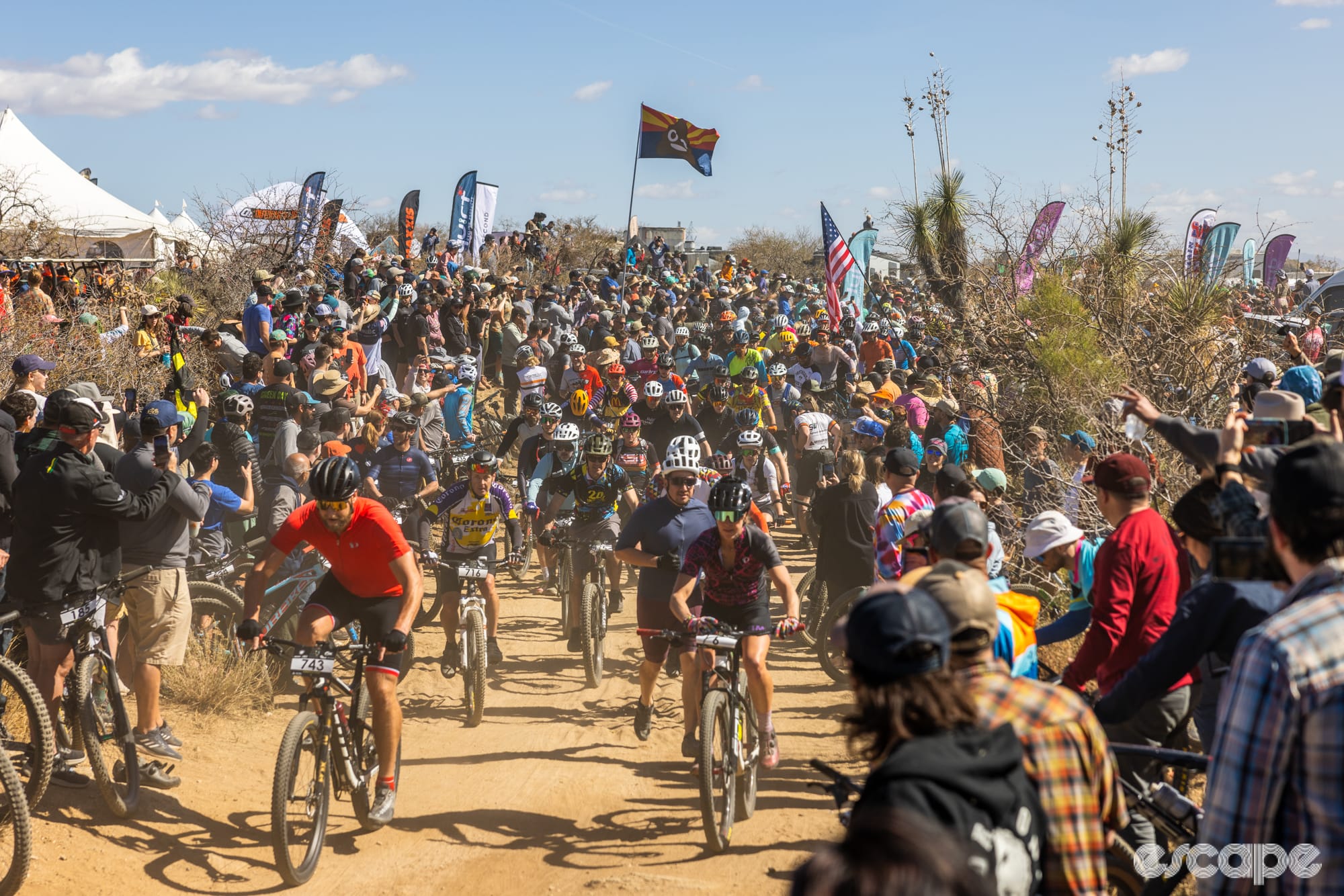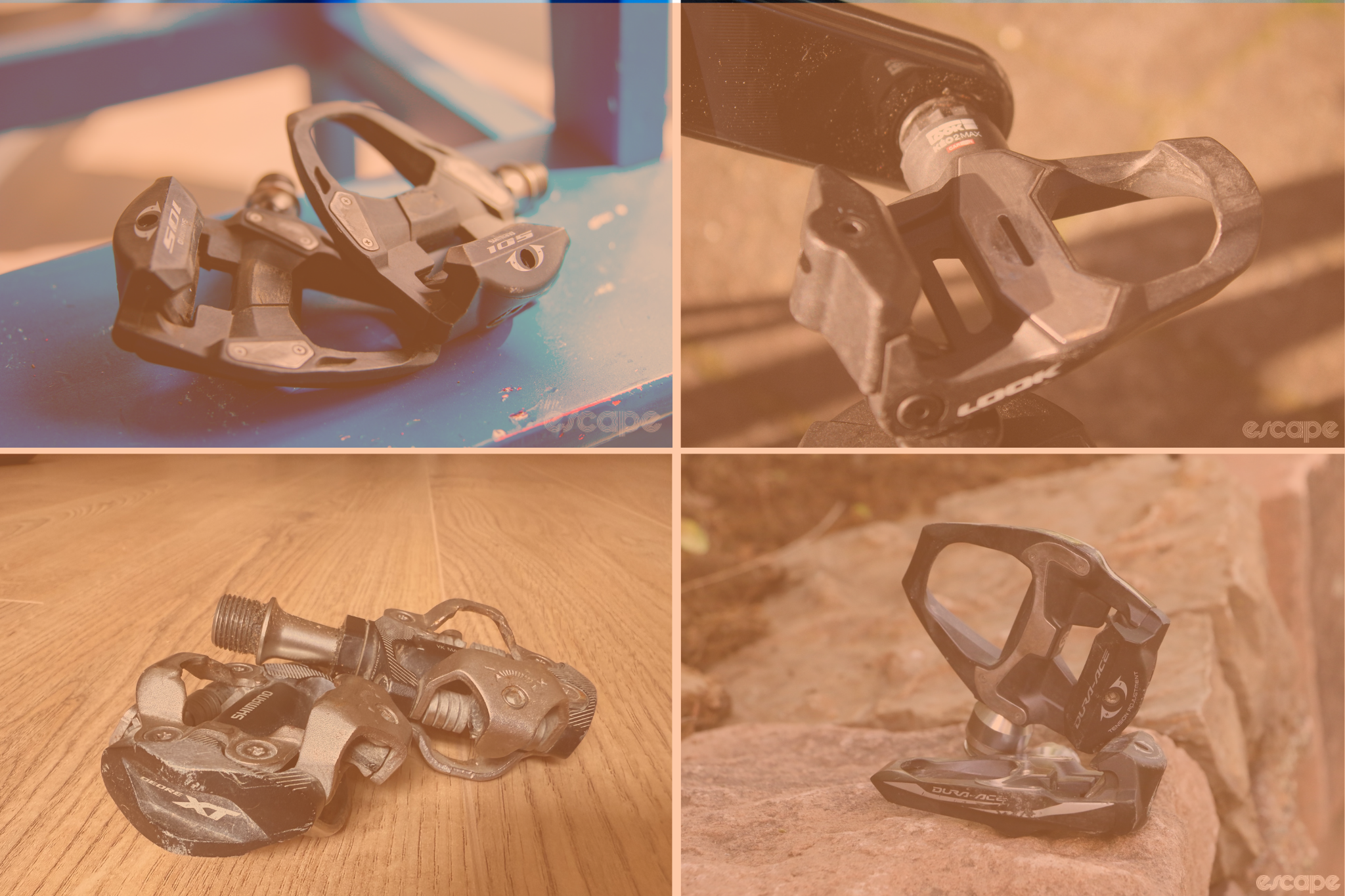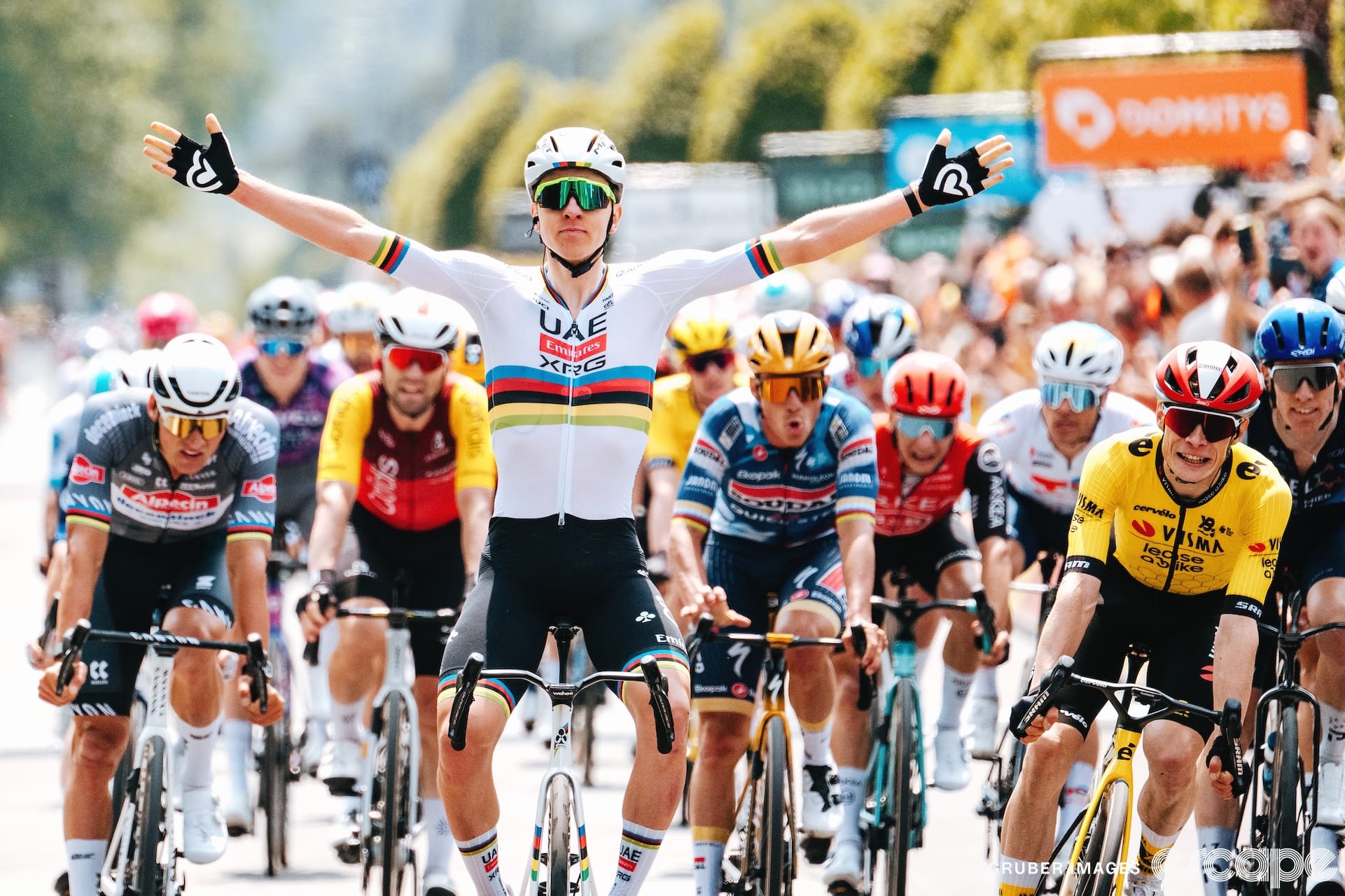Taking place on rugged ranchland between Phoenix and Tucson in Arizona’s Sonoran Desert over President’s Day Weekend, 24 Hours in the Old Pueblo (24HOP) combines fast singletrack racing, party vibes, and grit that continues to attract racers and fans from all over the world 25 years after its inception. As one of the last events of its kind, 24HOP seems like a throwback to a different era in mountain biking while also serving as an integral component of Arizona’s cycling culture.
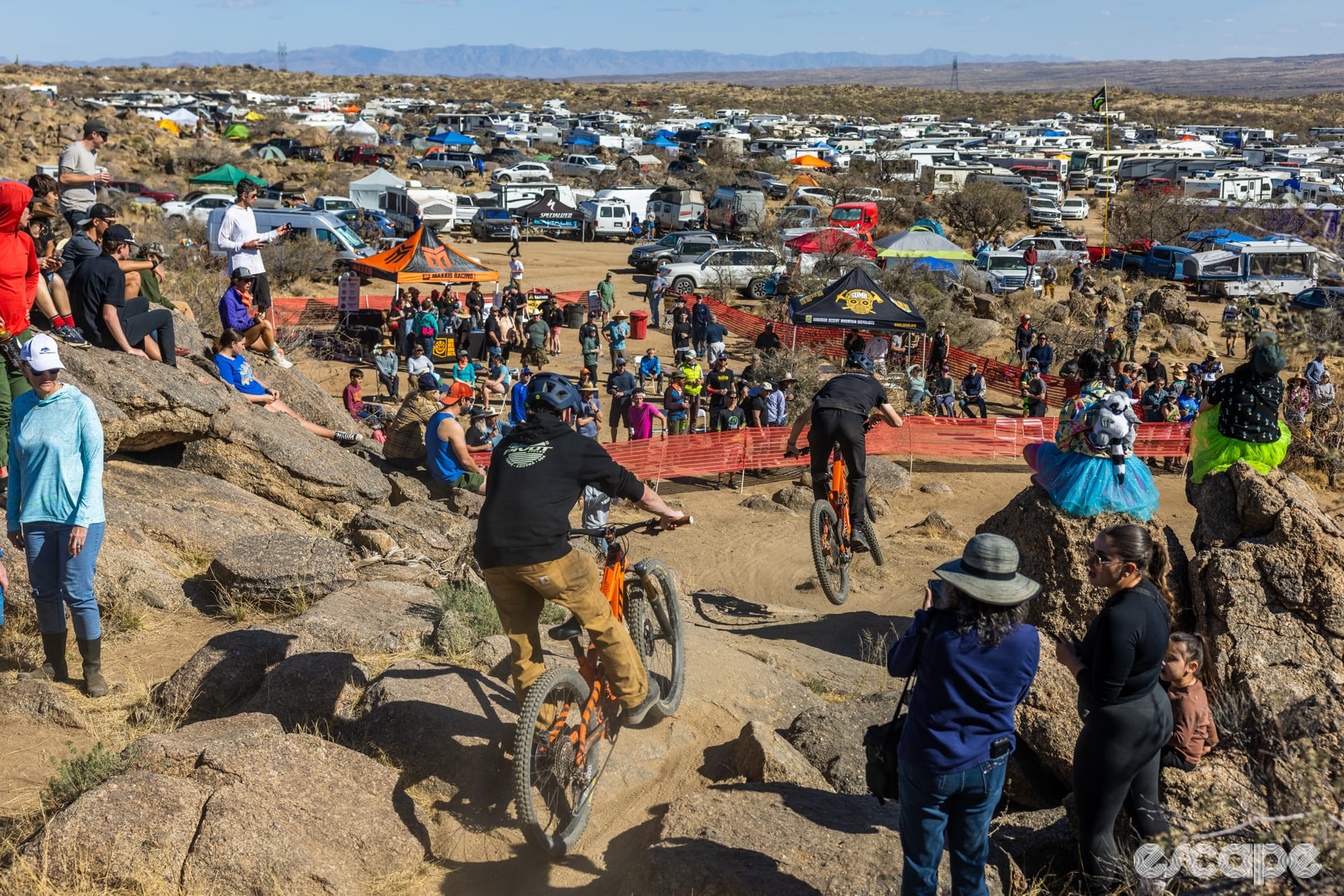
Twenty to 30 years ago, 24-hour races were quite popular. The genre began in 1992 with the first 24 Hours of Canaan in Canaan Valley, West Virginia and then grew to a worldwide phenomenon with races all over the world, a U.S. National 24-Hour Series, and even a World Championship. Most race formats included categories for 2- to 10-person teams, often encouraging a mix of genders, taking turns to complete as many laps as possible. Eventually categories were opened up to solo riders as well.
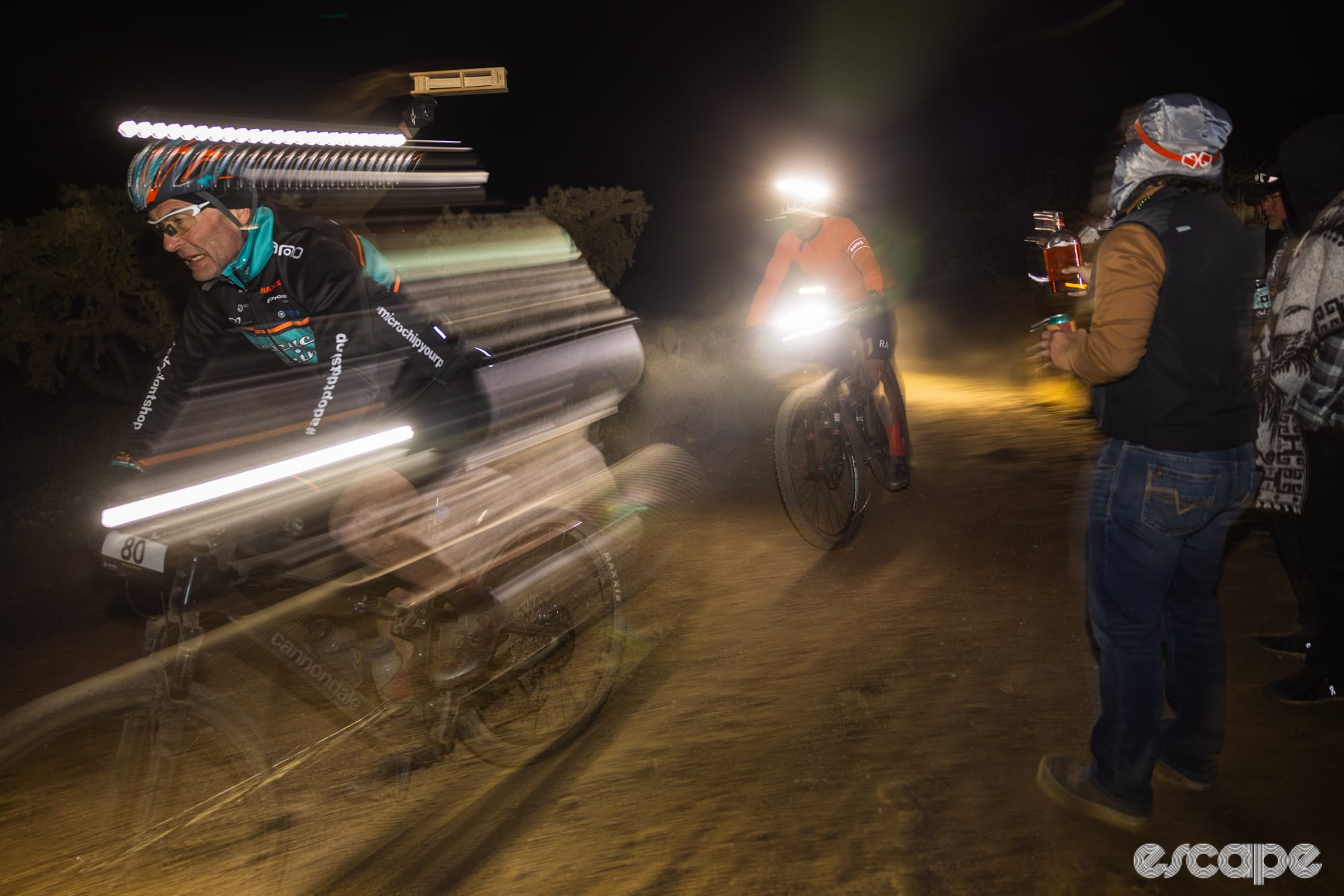
Twenty four-hour events usually take place on trail systems away from lodging or other amenities, so racers and support teams typically camp on site, which lends well to creating a short-lived but resounding communal atmosphere. And depending on the time of year, a good chunk of time spent racing is done in the dark, adding another challenging element to the already layered format. While excitement for these quirky races grew during '90s and '00s (a quirky time in general for mountain biking), it has since waned and left 24HOP as one of the only remaining holdouts. And it is as strong as ever.
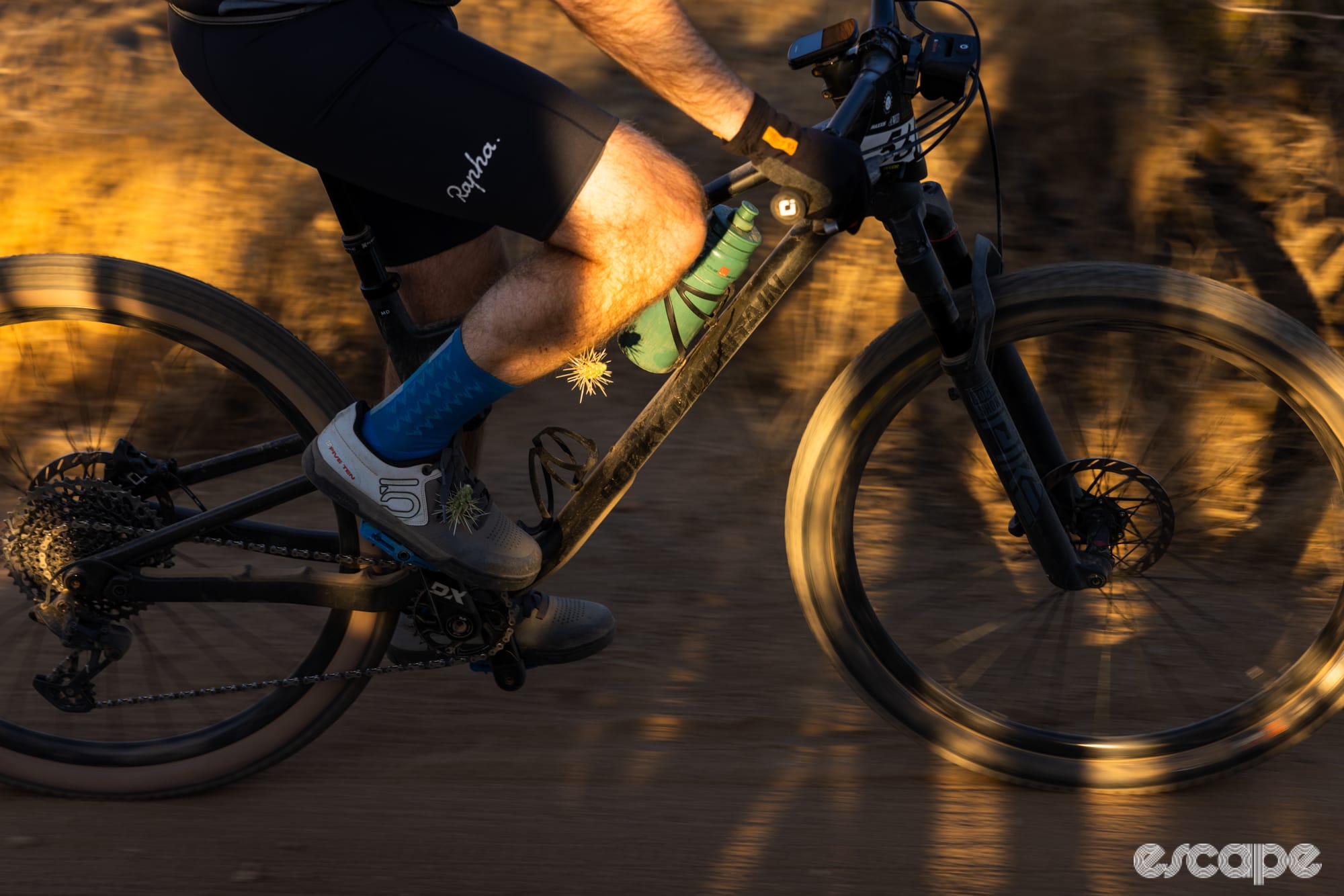
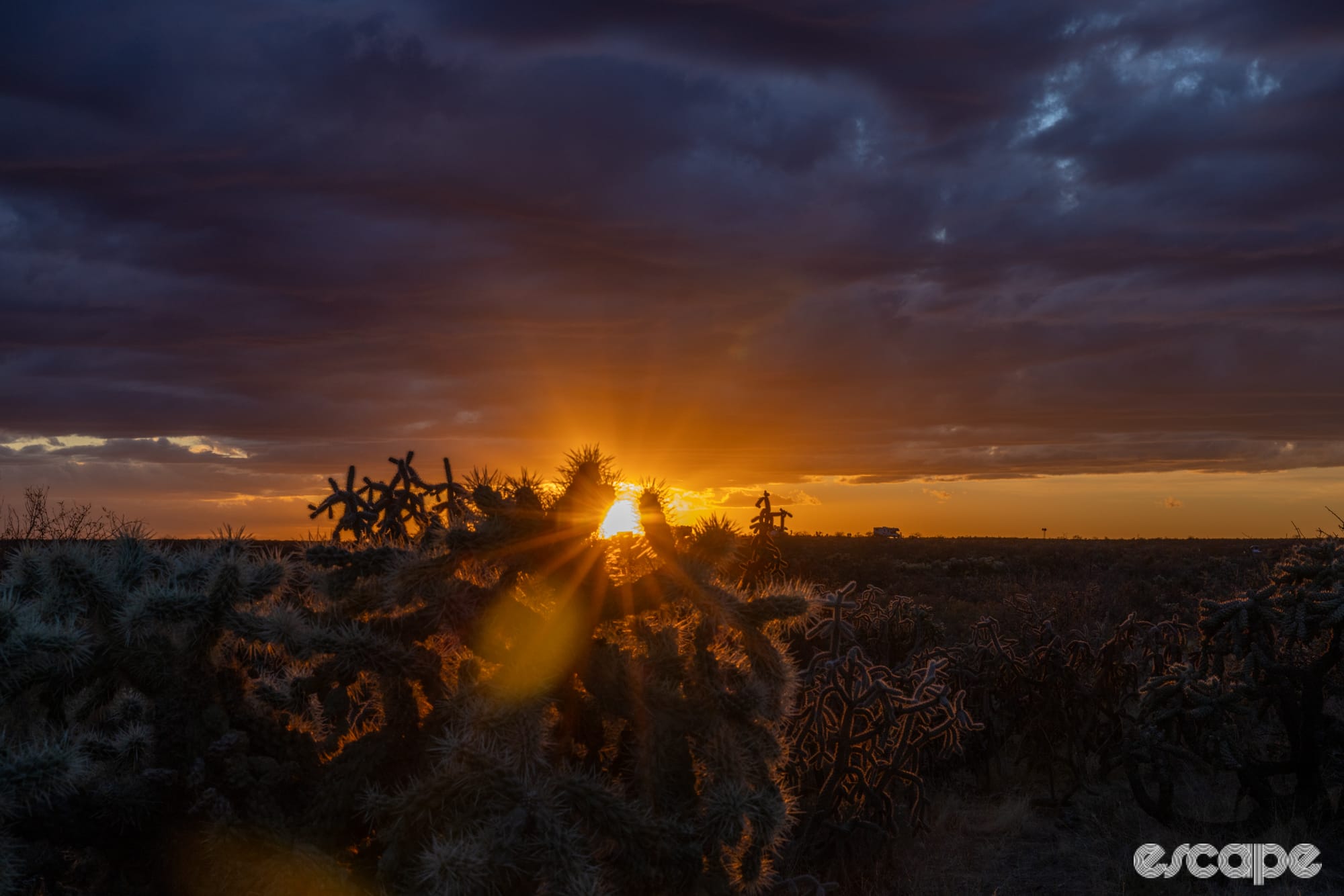
The objective is simple: ride as many laps of the course as possible within 24 hours. From noon on Saturday until noon on Sunday riders take to the course individually or as part of a team. At 16.8 mi/27 km, the roughly figure eight-shaped track for 24HOP isn’t exceptionally technical – barring some jumps, loose sandy arroyos, tight turns, and spiky “jumping” cholla cactus lining the trail – but many racers will tell you it’s the speed and repetition that becomes challenging over time.
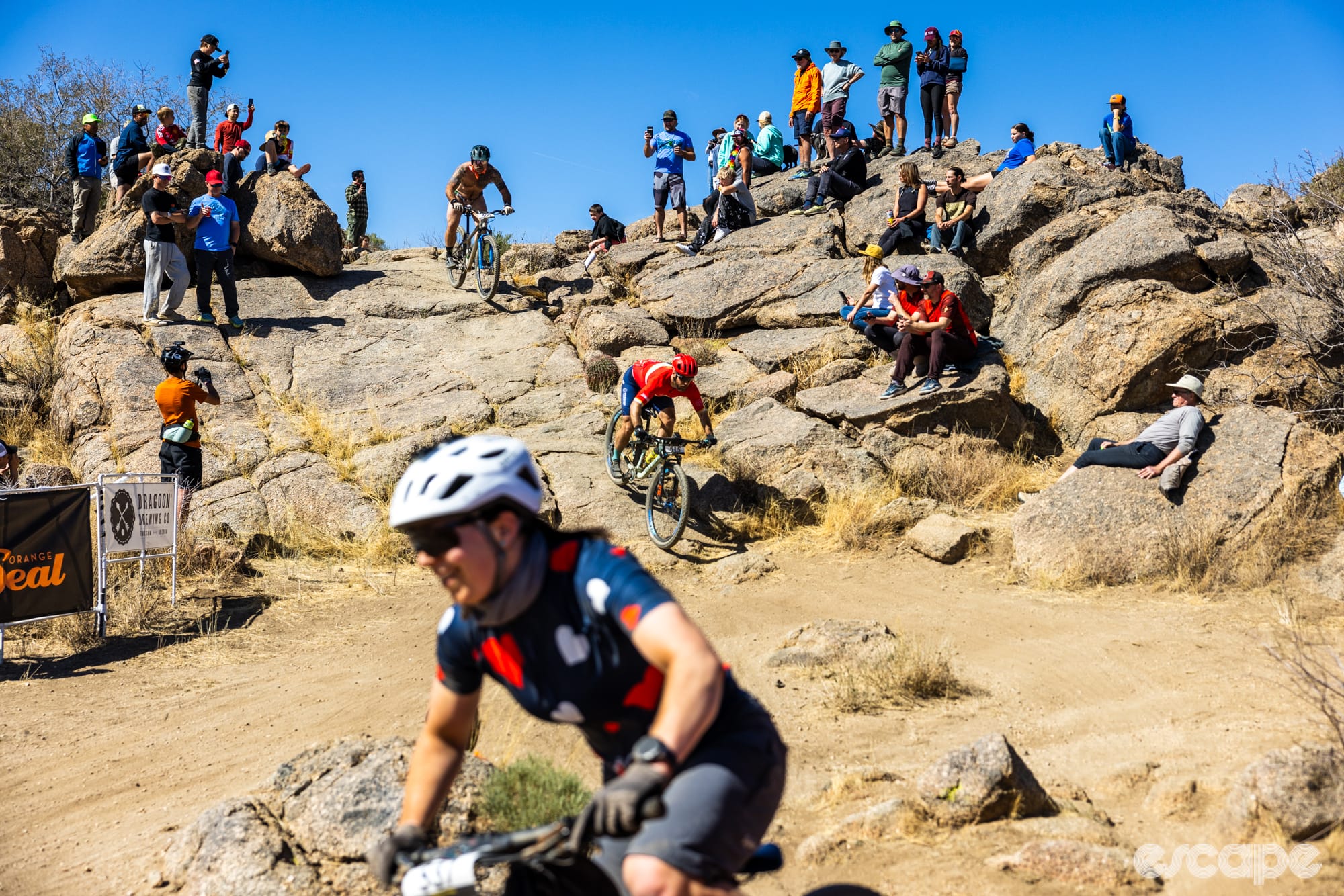
February is a busy month for cyclists in Arizona. Most folks have eased back into a “normal” schedule after hectic holidays; days get longer, allowing for more after work rides in nearly perfect temperatures, and weekend events populate calendars. Since moving to the state nearly 10 years ago, I’ve experienced the 24HOP buzz build in early January until coming to a head in the days leading to the event in mid-February. Yet, with all of the excitement around the storied endurance race, I hadn’t made a priority of participating.
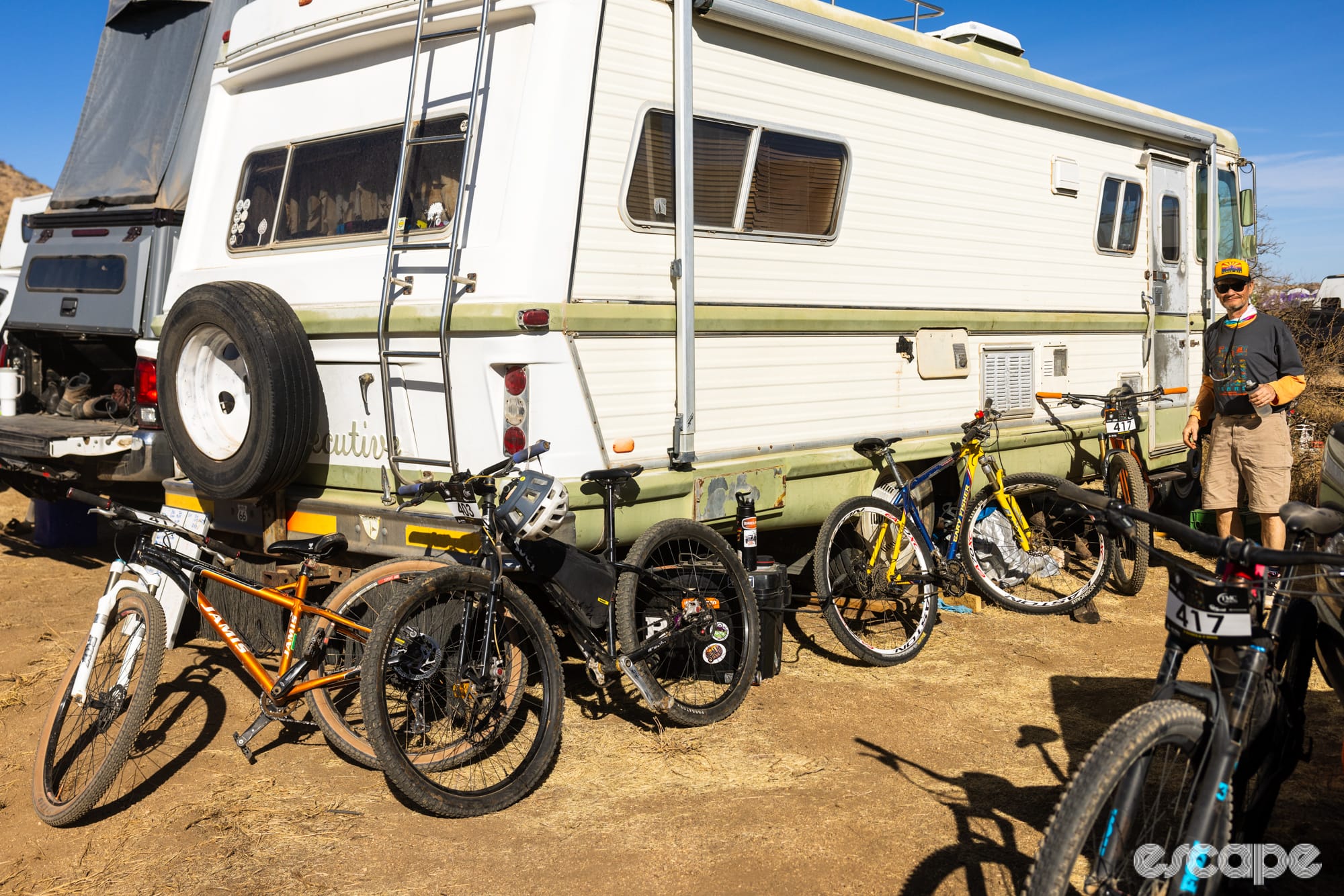
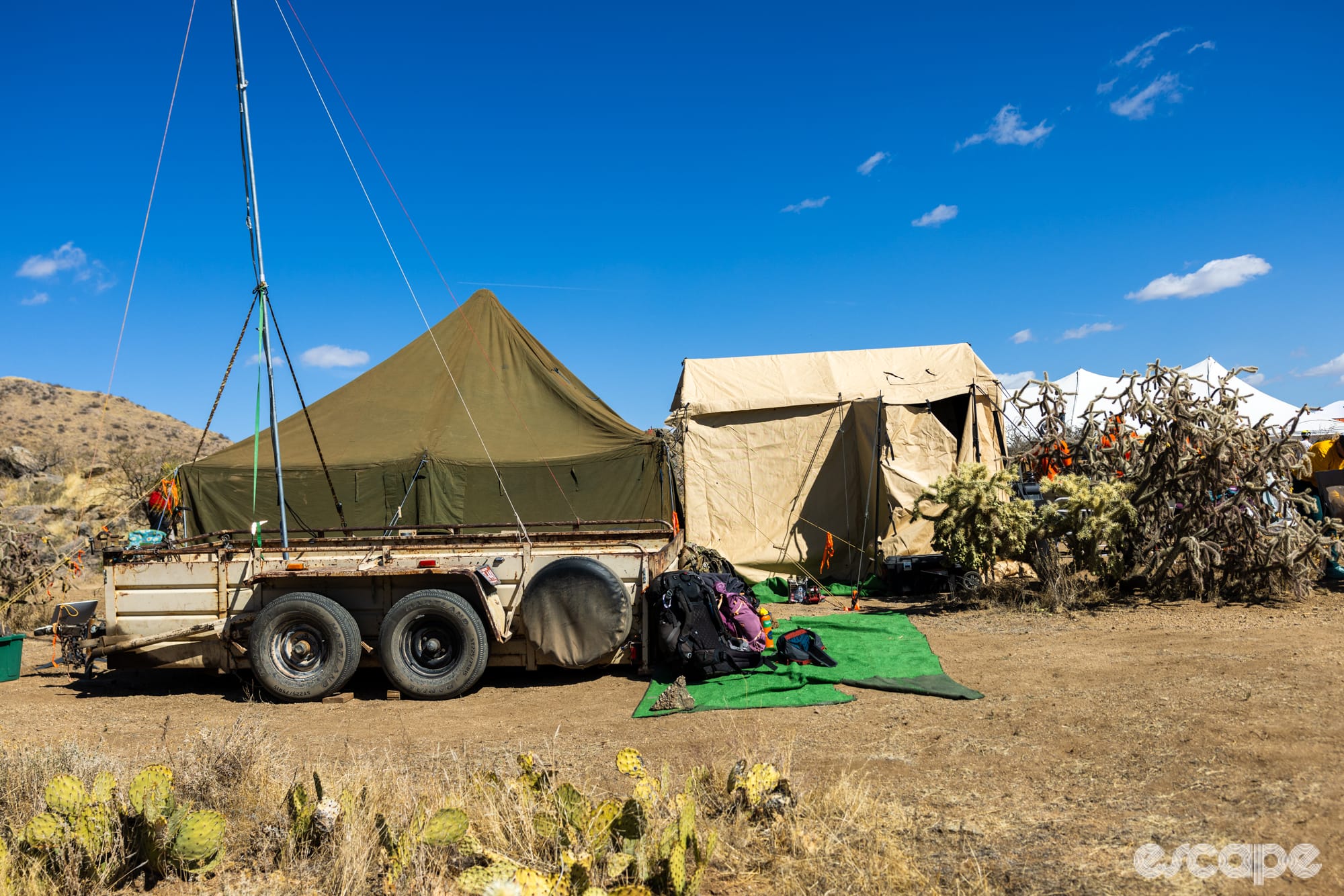
I usually opt to attend Single Speed Arizona, an annual gathering of one-geared enthusiasts to camp and ride, which takes place over the first week of the month; that tends to zap my social endurance and eats up time away from my family. But this year was different. I received multiple invitations from friends to attend 24HOP and support and cheer them on, with a few loose possibilities to join teams short on riders. Plus, 2025 marks 25 years of 24HOP; a seemingly remarkable milestone in the context of a race format that time seems to have largely forgotten. This year, regardless of if I’d actually be racing, I went down to answer a question: Long after most events of its kind have disappeared, why is 24HOP still so popular?
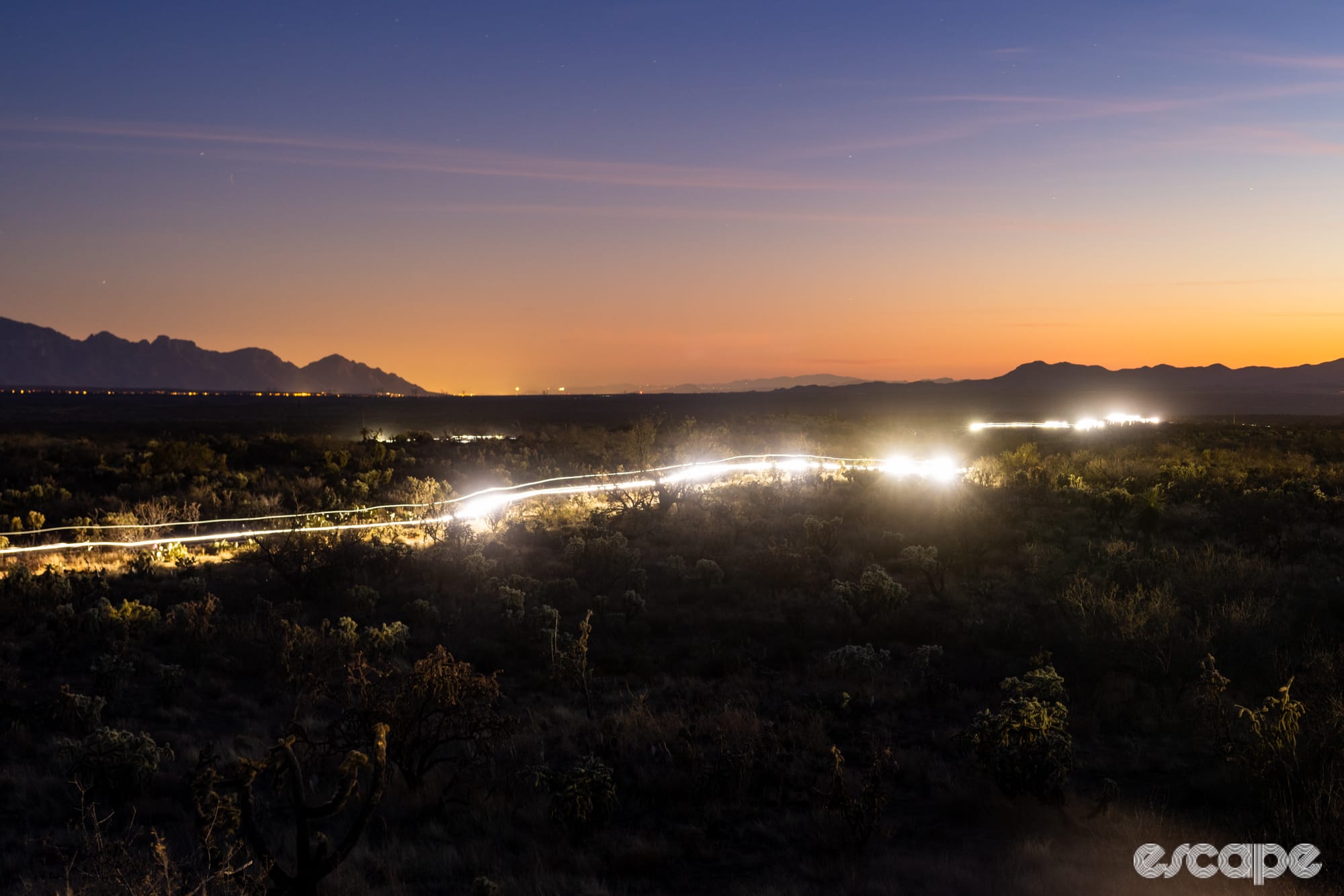
A recipe for success built over 25 years
Over the years, 24HOP slowly increased limits on registrations and currently tops out at 2,000 participants. Todd Sadow, event co-founder and owner of promoter Epic Rides, indicated that this number of racers is comfortable and he doesn’t expect it to increase. While Sadow told me he has a wonderful relationship with the family of landowners that permit the event to happen, 2,000 riders – plus another couple thousand or so supporters, vendors, and volunteers – is enough.
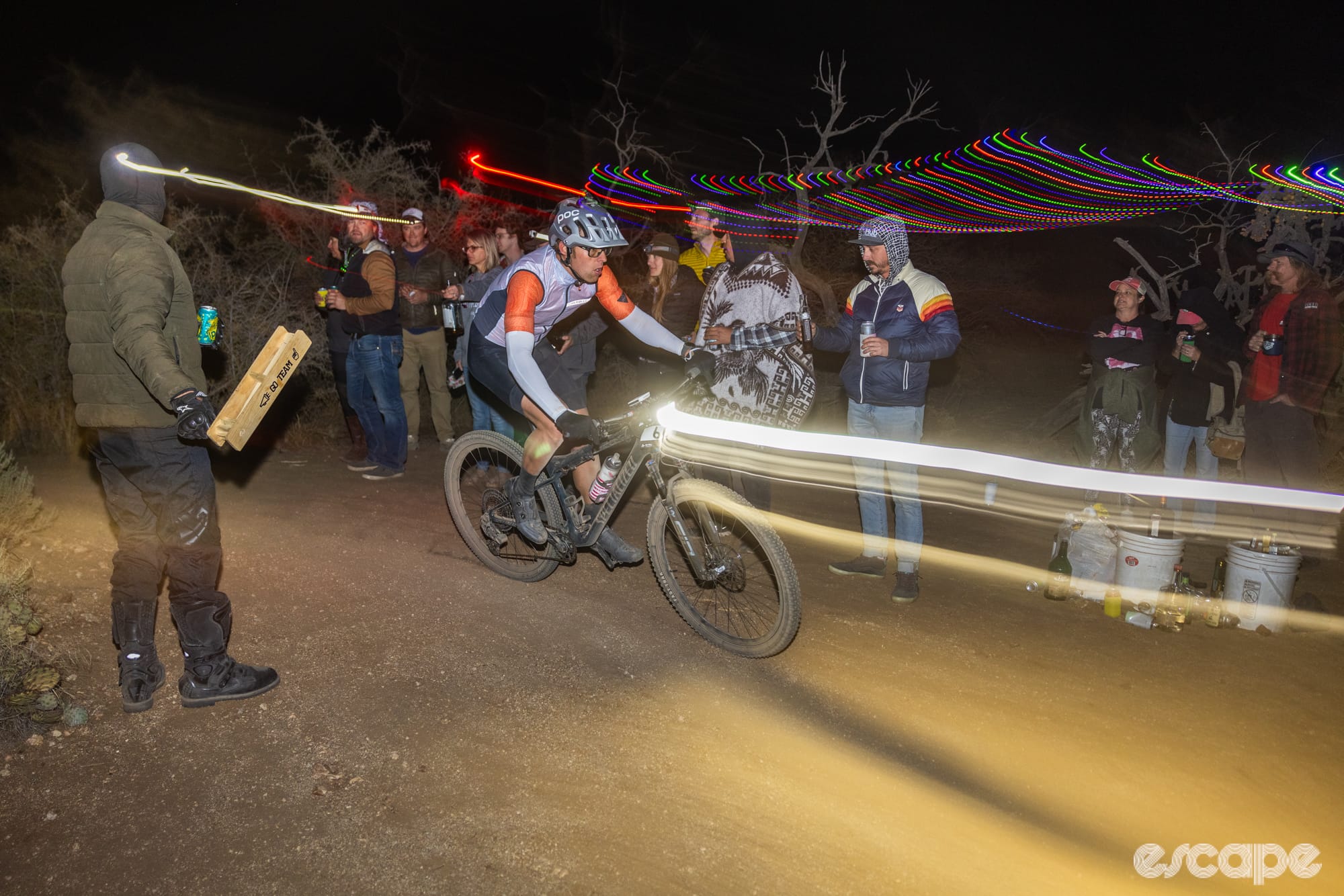
The race always sells out in a remarkably short amount of time; this year it happened in under an hour. And registration is a major commitment. Depending on team format, fees average around $250 per person. For the individuals registering on behalf of a larger group (“corporate teams” have from six to 10 riders), committing to 24HOP can require shelling out a lot of money at once, so it’s important to have a game plan before the narrow sign-up window opens in early October. And then the real adventure starts.
Did we do a good job with this story?

